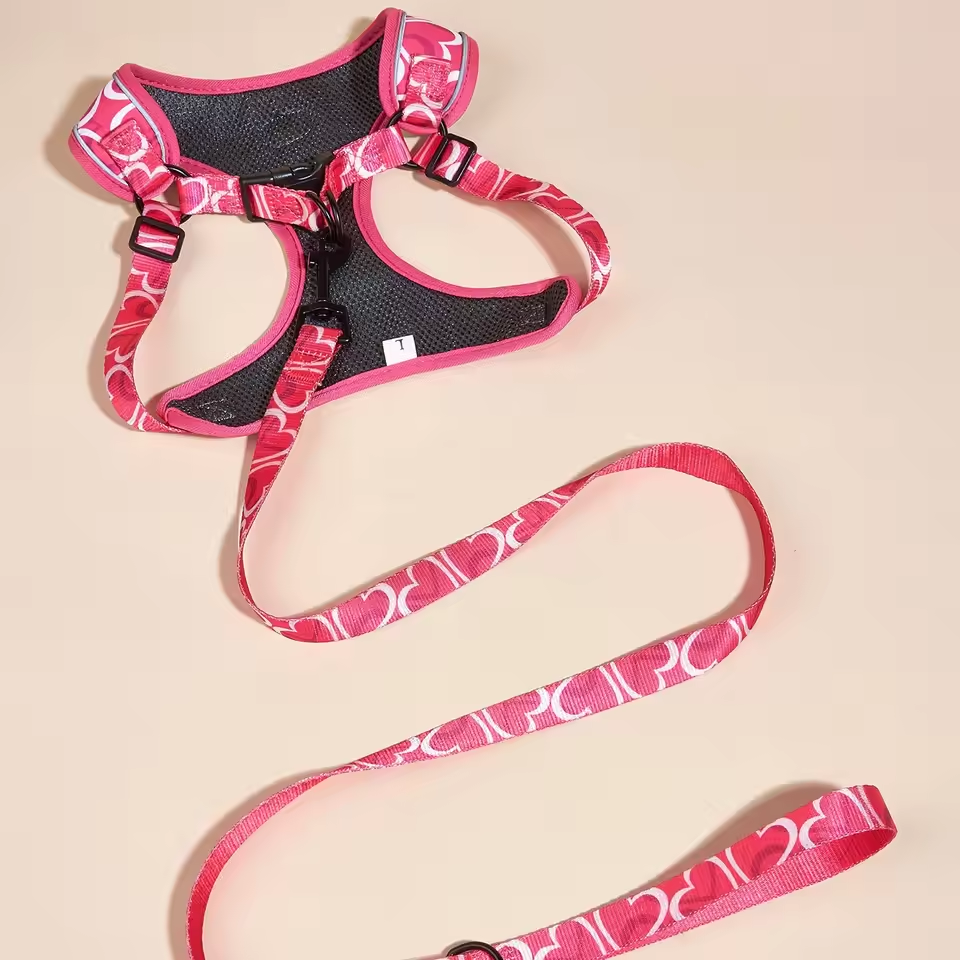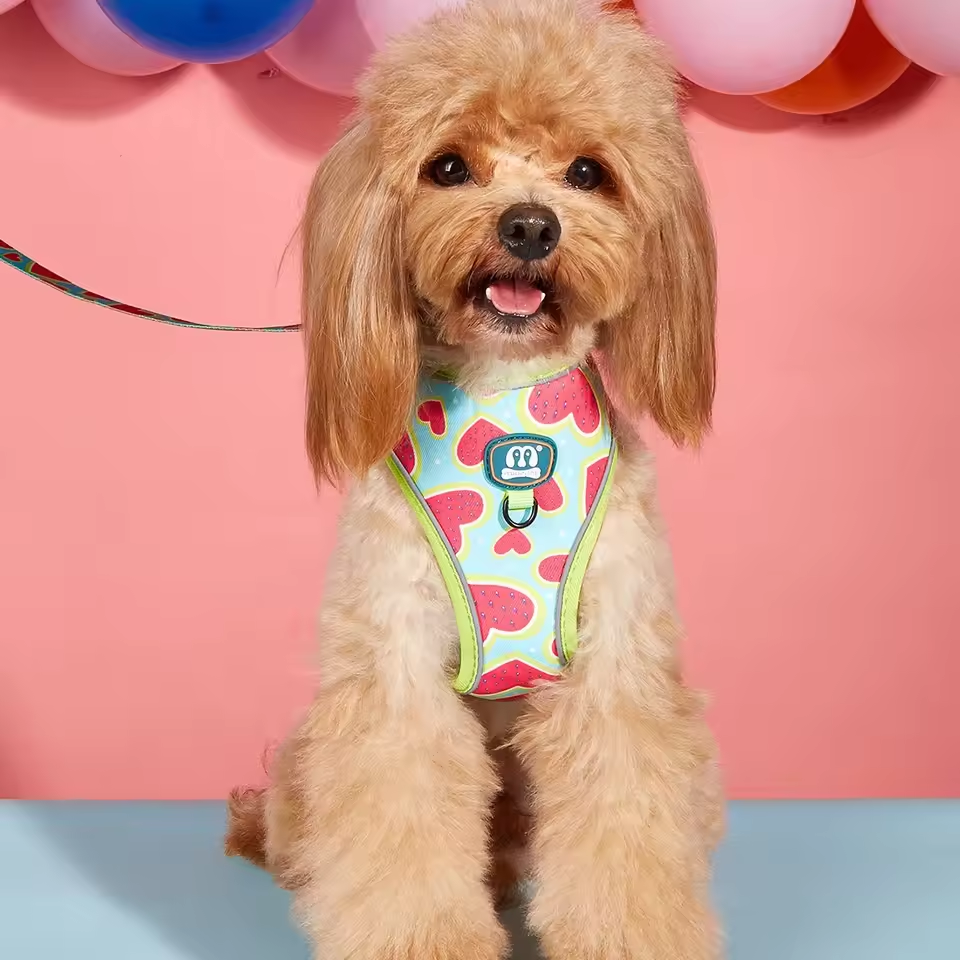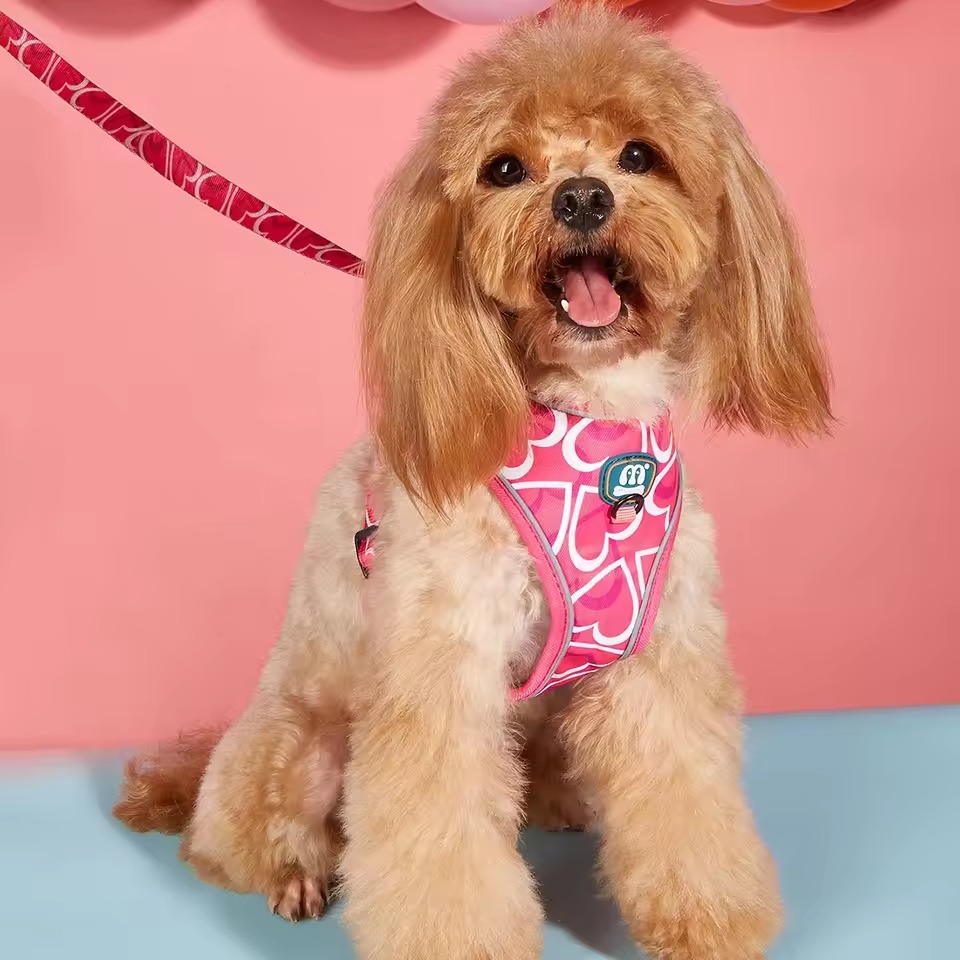The Importance of Choosing the Right Harness
Choosing the right medium dog harness is crucial for your pet’s comfort and safety. A harness that fits well can prevent injury and escape during walks. It also ensures better control over your medium-sized dog, especially in busy or unfamiliar environments. A well-chosen harness can distribute pressure more evenly across your dog’s body compared to a collar, which concentrates it around the neck. This is particularly important for dogs who may pull on the leash or have respiratory issues. Additionally, the right harness can help discourage pulling, making walks more enjoyable for both you and your furry friend.

The decision becomes even more significant for medium-sized dogs, which can range from sturdy to slim builds. They need a harness that suits their specific body type and energy levels. Consideration of the dog’s behavior, such as whether they are avid pullers or calm walkers, is also essential in choosing the perfect medium dog harness. It’s vital to balance the need for control with the need for comfort. Otherwise, your dog might resist wearing the harness, making it difficult to manage them during outdoor activities.
Thus, investing the time to select the appropriate harness pays off in the long run. It enhances your dog’s wellbeing and strengthens the bond between you and your pet through stress-free outings.
Types of Harnesses for Medium-Sized Dogs
Finding the right medium dog harness involves understanding the different types available. Each type has distinct features and suits various walking styles and behaviors. Let’s explore the most common types of harnesses suited for medium-sized dogs.
Front-Clip Harnesses
Front-clip harnesses have a leash attachment point at the chest. They give you more control over your dog’s direction and are great for training purposes. They can discourage pulling by redirecting your dog’s movement towards you when they try to pull away. These harnesses are ideal for medium dogs who are strong pullers or those in training.
Back-Clip Harnesses
Back-clip harnesses feature an attachment point on the back, above your dog’s shoulders. They are easier to put on and more comfortable for many dogs. This type is better for calm walkers who don’t pull much. With a back-clip harness, your dog can move freely, and there’s less chance of the leash tangling under their front legs.
Dual-Clip Harnesses
Dual-clip harnesses offer the best of both worlds, with attachment points on both the front and back. This versatility allows for different training techniques or walking styles. You can use the front clip to reduce pulling or the back clip for more relaxed walks. They are perfect for dog owners who want various options for walking their medium-sized dogs.
Measuring Your Dog for the Perfect Harness Fit
Ensuring a perfect fit for your medium dog harness is key to your pet’s safety and comfort. Measure your dog before buying a harness, so it fits snuggly without being tight. Start by measuring your dog’s neck, where a collar would sit. Then, measure the widest part of your dog’s chest. Lastly, measure the length from the base of the neck to the start of the tail. Have your dog stand still during measurements, and add a finger’s width for breathing room.
Make sure you check the sizing guide for each harness, as sizes can vary between brands. A harness that’s too small can cause chafing and discomfort; too large might not provide enough control or security. Most importantly, always do a fit-check by slipping two fingers under the straps once the harness is on your dog. If your fingers fit snugly, you’ve found the just-right size. Remember to recheck the fit periodically, as your dog’s size can change due to weight fluctuation or growth.

Key Features to Look for in a Harness
When shopping for a medium dog harness, there are key features you must consider. These features ensure your dog’s comfort, safety, and the usability of the harness. Here’s what to focus on:
Padding and Comfort
Choose a harness with ample padding. Soft padding along the chest and back reduces pressure and prevents skin irritation. Look for breathable materials that will keep your dog cool during walks. Comfort is key, as it helps your dog to enjoy wearing the harness.
Adjustability and Secure Fit
A good harness must be adjustable. It should have multiple points where you can alter the fit. This ensures a snug, secure hold without being too tight. Look for sturdy straps and reliable buckles. They need to endure the pull of a medium-sized dog while still being easy to clip on and off.
Reflective Material for Safety
For nighttime walks, reflective material is a must. It makes your dog visible to drivers and others. A harness with reflective strips can give you peace of mind. It offers an extra level of safety during early morning or late-night strolls.
Benefits of Harness Over Collar for Medium Dogs
Choosing a medium dog harness over a collar offers several advantages. Harnesses provide better control without putting much strain on your dog’s neck. This is especially vital for dogs that pull or have throat issues. Below are the key benefits of harnesses over collars for medium-sized dogs:
Enhanced Safety
Harnesses offer superior safety. They reduce the risk of neck injuries from sudden tugs on the leash. They also prevent escape, as it’s harder for dogs to slip out of a harness.
Improved Control
A harness gives you more control over your dog’s movements. This is essential for training or managing dogs in crowded spaces. You can steer them with less effort and more precision.
Better Comfort for Your Dog
Harnesses distribute pressure evenly across the chest and back. This avoids the concentrated pressure on the neck that collars can cause. Dogs can breathe easier and move more comfortably during walks.
Versatility for Different Situations
Harnesses work well in various scenarios, from casual walks to vet visits. They provide a secure way to handle your dog in any situation that may arise.
Can Help Reduce Pulling
With the right design, such as a front-clip harness, you can discourage pulling. This makes walks more relaxing for you and your dog. Training becomes easier and more effective.
Health Benefits
Collars can lead to health issues for your dog, especially if they’re prone to pulling. Harnesses mitigate these risks and are recommended by many veterinarians.
When it comes to choosing between a harness and a collar for your medium-sized dog, comfort, safety, and control are key. Harnesses are a great choice to ensure your pet’s wellbeing during daily activities and training sessions.
How to Train Your Dog to Wear a Harness
Training your dog to comfortably wear a medium dog harness can be simple and stress-free. Here are some practical steps to follow:
Step 1: Introduce the Harness Gradually
Let your dog inspect the harness by placing it near their sleeping area. Allow them to sniff and get used to it before touching them with it. Associating the harness with positive experiences is key. Offer treats and affection during this stage.

Step 2: Practice Putting the Harness On
Start by gently draping the harness over your dog’s back without fastening it. Praise them and give treats. Increase the duration over a few days. This helps them get used to the feel of the harness.
Step 3: Secure the Harness
Once they’re comfortable, carefully put the harness on and secure the clips. Keep sessions short. Always speak in a calm voice and continue to reward your dog for their cooperation.
Step 4: Adjust for a Perfect Fit
Make sure the harness fits snugly but allows room to breathe. Adjust the straps following the instructions. A good fit ensures comfort and safety.
Step 5: Take Short Walks Inside
Begin by walking your dog around the house. This familiar environment can ease them into the new sensation. Watch for any signs of discomfort and adjust the harness if necessary.
Step 6: Progress to Outside Walks
Start with short outdoor walks. Keep distractions to a minimum. As they gain confidence, gradually increase the walking distance and time.
Step 7: Reinforce Good Behavior
Continue to use positive reinforcement. Praise your dog and offer treats for wearing the harness without fuss. This encouragement makes the process enjoyable for your dog.
In summary, patience and repetition are vital when training your dog to wear their medium dog harness. Using positive reinforcement techniques will ensure that your dog associates the harness with happy, rewarding experiences.
Care and Maintenance Tips for Dog Harnesses
Taking care of your medium dog harness extends its life and ensures safety. Here are some care and maintenance tips:
Regular Cleaning
Wash the harness regularly to remove dirt and odors. Use mild soap and warm water. Rinse it well and let it air dry. Avoid using harsh chemicals or bleach.
Checking for Wear and Tear
Inspect the harness often for signs of damage. Look for frayed straps, loose threads, or worn buckles. Replace the harness if you notice any serious wear.
Storing Properly
When not in use, hang the harness in a cool, dry place. Avoid folding or crumpling it, which can cause damage.
Following Manufacturer’s Instructions
Read the care label or manual. Follow the manufacturer’s recommendations for cleaning and storage.
Adjustments Before Each Use
Before putting the harness on your dog, check the fit. Make sure it’s still snug and adjust the straps if needed.
Replace When Necessary
Don’t wait for a harness to break before getting a new one. If it looks old or fits poorly, it’s time to replace it. Ensure your pet’s safety with a reliable medium dog harness.
Good care of your medium dog harness helps keep your pet comfy and secure. Follow these tips to maintain the quality of the harness over time.